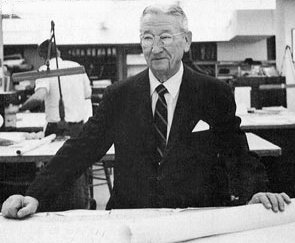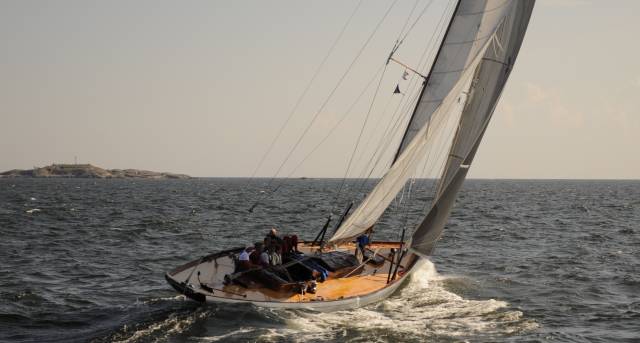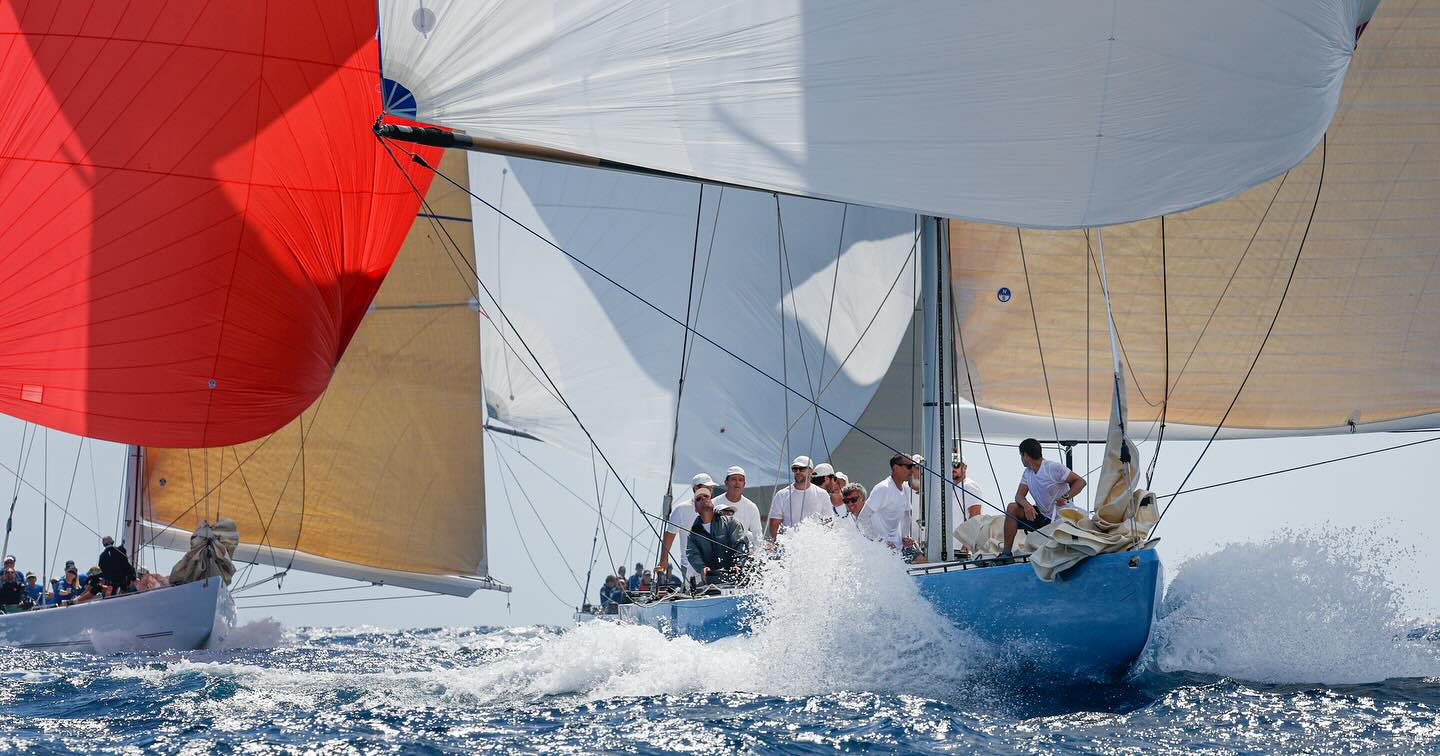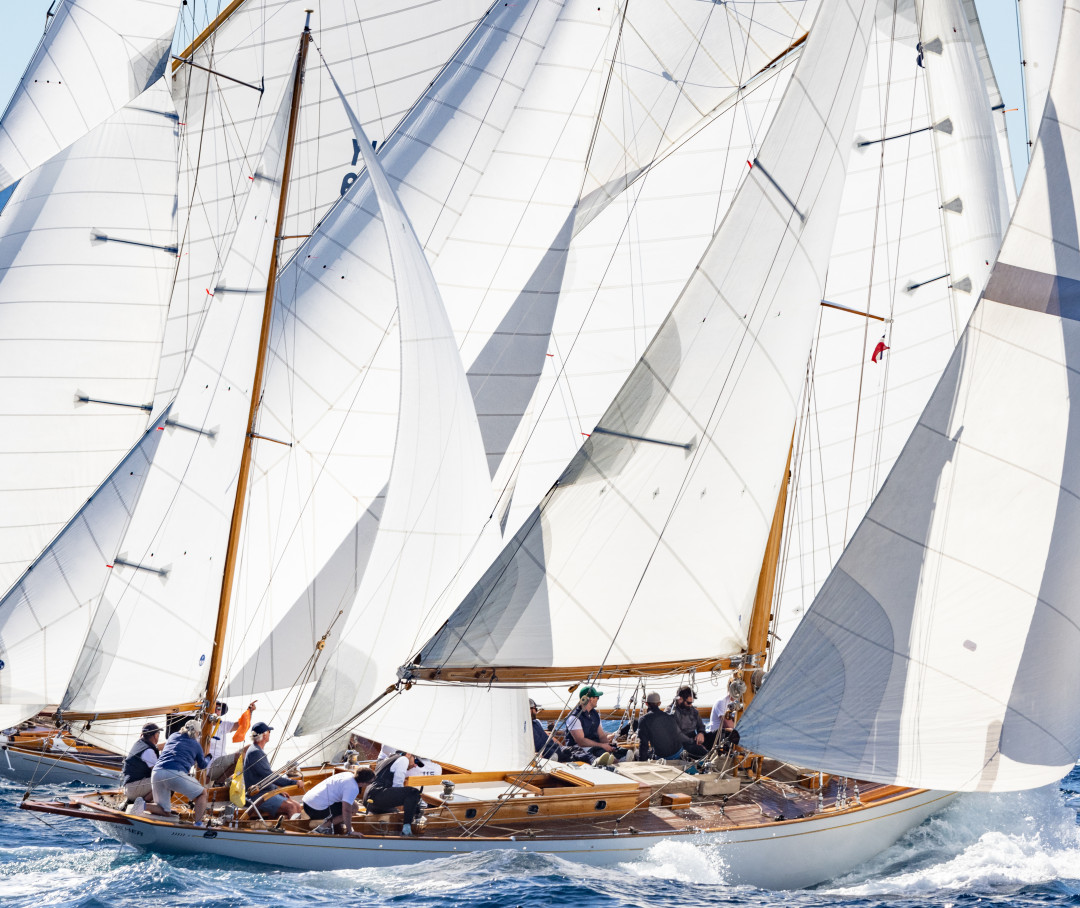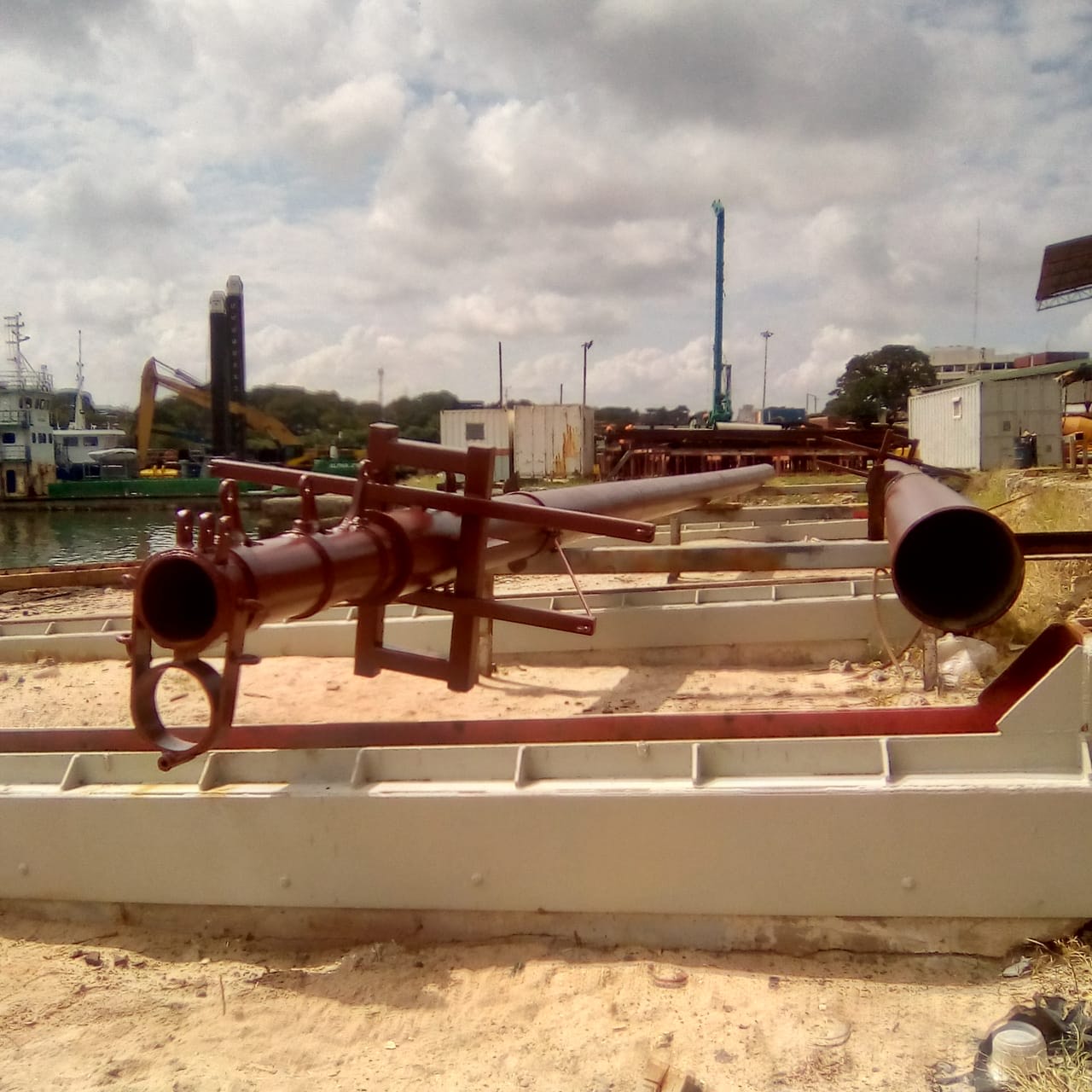Philip L Rhodes was a prolific and versatile boat designer, whose career spanned more than five decades. His designs ranged from 123′ motorsailers to 7′ dinghies, from hydrofoil racers to giant motor yachts. His clients included the Rockefellers and Sears and Roebuck. The Rhodes designed 12-Metre Weatherly won the America’s Cup in 1962. He also designed a wide range of commercial craft.
Rhodes was one of the pioneers in the transition to fiberglass construction. The Bounty II for Coleman Plastics in 1956 became one of the earliest yachts built of fiberglass, and established the viability of the new material for larger production boats.
By the 1950’s, Philip Rhodes spent most of his time managing the firm. In the sailboat portion of the office, James McCurdy, a very talented designer, served as head of the Yacht Design Section. The actual designs of boats followed certain formula and guidelines Rhodes had developed earlier. Much of the later basic design work was done by his son Philip H (“Bodie”) Rhodes. Detailed layouts and drawings were done by Al Mason, Charles Jannace, and Dick Davis. Other designers worked on motor yachts, and commercial and military boats. In addition, Rhodes’ other son, Daniel Rhodes, did brokerage work in the office.
Before Rhodes retired in 1970, he began to phase out his office in the late 1960s. In 1968, Jim McCurdy and his son Bodie Rhodes left to set up their own yacht design company (McCurdy and Rhodes). Mark Ellis came into the gap and worked for Philip Rhodes for a year. McCurdy and Rhodes, among other things, continued the Rhodes design work for Seafarer Yachts. Jim McCurdy died in 1996, and Bodie Rhodes died in 1998. Jim’s son Ian McCurdy continues the family tradition in boat design.
Most of the Rhodes material is archived at the Daniel S. Gregory Ships Plans Library, Mystic Seaport Museum.
